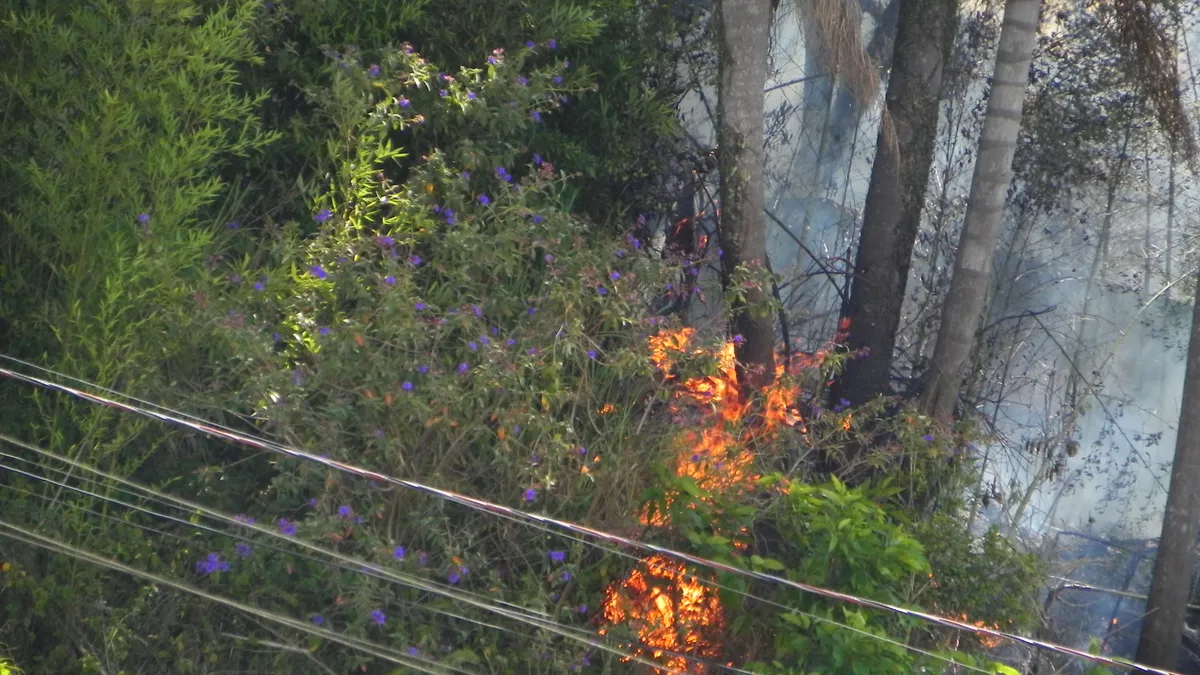Earlier this year, the world watched in horror as Australia's 2019-2020 fire season charred more than 12.4 million acres, killed more than 30 people, and left millions of animals either dead, injured, displaced, or struggling to survive in scorched habitats. Fires in New South Wales occurred continuously for some 240 days. That's nearly 8 months of constant conflagration.
The tragic fires down under are among the most recent manifestations of a disturbing trend overall. Wildfires have become larger, more destructive and more frequent. Utilities must reckon with these trends in system planning and operations to ensure that utility infrastructure isn't the source of the next deadly spark.
The real deal
For any utility manager thinking that wildfires are not a problem in their service areas, perhaps it's time to think again.
Anthony Westerling, a professor of Environmental Engineering at the University of California, Merced, teamed up with researchers from five other research universities and found that large wildfires – those that scorched 1,000 acres or more – increased 450% across federal lands in the Western U.S. during the decade ending with 2012. These blazes burned areas that were 930% larger than similar fires in the 1970s and 1980s.
"These changes are closely linked to increased temperatures and a greater frequency and intensity of drought," Westerling and his colleagues wrote in a briefing for the U.S. Department of Agriculture's Forest Service. Indeed, NASA's Earth Observatory has noted that our planet's average global temperatures have increased 1.4 degrees since 1880, and two-thirds of that change has occurred since 1975.
Even places we don't expect to be tinder dry now see remarkable fire events. A case in point is Australia's Gondwana rainforests, of which more than half burned during this most recent fire season. Florida is another place we expect to see plenty of humidity and lush greenery. Still, moderate drought recently contributed to a fire that damaged or destroyed more than 3,500 rental cars in an overflow parking lot at the Fort Meyers airport.
Australian ecologist Mark Graham told a U.S. National Public Radio reporter, "We're in the Pyrocene, the age of fire." Fortunately, another trend can help utility managers mitigate fire risk and address wildfire events. Technology is helping utilities keep up with fire risks. Are you keeping up with technology?
Fire-fighting priorities
If you looked at the wildfire mitigation plans filed by major utilities in California, you'll see vegetation management surfaces as a priority in all of these documents. Utilities with AMI systems already have a leg up on smart tree-trimming practices because advanced meters report momentary outages, which may indicate vegetation contact. But, what about remote areas, where advanced meters aren't out there on the lines reporting those transient events?
Smart grid sensors can fill in nicely, which is why Pacific Gas & Electric told California told regulators it would be using them to help manage its network. According to its wildfire mitigation plan, PG&E is targeting both smart meters and Smart Grid Sensors to augment situational awareness, which the utility said would support "more accurate forecasting and identification of environmental events and operating conditions that pose a risk to the grid so that critical issues may be dealt with as quickly as possible to avoid the risk of catastrophic wildfires."
During the years 2014 through 2016, more than 51% of fires reported by PG&E to California regulators were suspected to be triggered by vegetation contact with utility lines.
Smart grid sensors can help utilities identify areas where vegetation or other obstructions could cause sparks that could lead to fires. An investor-owned utility in the Midwest, for example, was using Aclara's sensors and, over the course of six months, the Aclara grid monitoring platform identified and alerted utility staff to nine separate events that required attention.
The utility investigated these events and found six instances of vegetation in contact with the primary conductor. In one of these events, utility workers found a fishing line wrapped around the phase and neutral wires. In total, utility staff estimated that finding these problems avoided approximately 400,000 customer minutes lost. In areas where wildfires are common, finding this type of fault can reduce the risk of a fire.
Another utility in the Northeast recently deployed smart grid sensors as part of their capital program to increase monitoring on their circuits. Even though the sensors were installed just six months after the circuit had hotspot tree trimming performed, the sensors detected areas of the circuit that were still experiencing vegetation contacts. The utility used the fault location capability of the Aclara Grid Monitoring solution to dispatch tree crews to resolve the remaining problem areas quickly and efficiently.
Sensors are a foundational technology for wildfire prevention efforts. They're made more powerful when utilities add analytics to turn the data sensors generate into actionable insights. That's what utilities will increasingly need because large fire outbreaks may make headlines, but they're becoming more and more common in the news. Utilities face a documented trend of increased fire risk. To learn more about addressing that risk, download Aclara's application guide titled Wildfire Mitigation with Sensors and Analytics.






